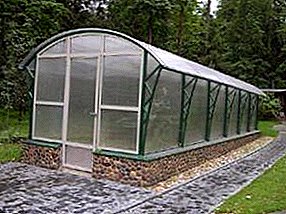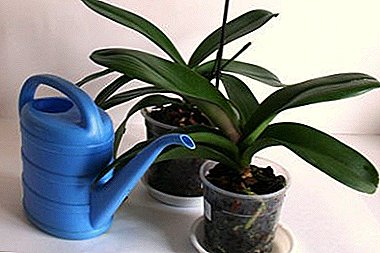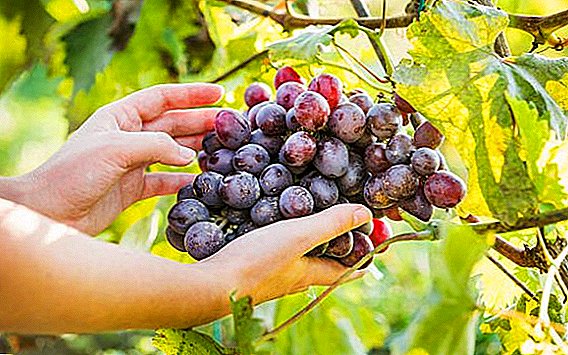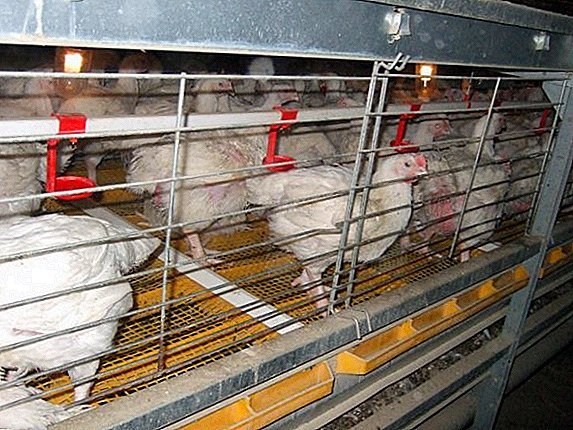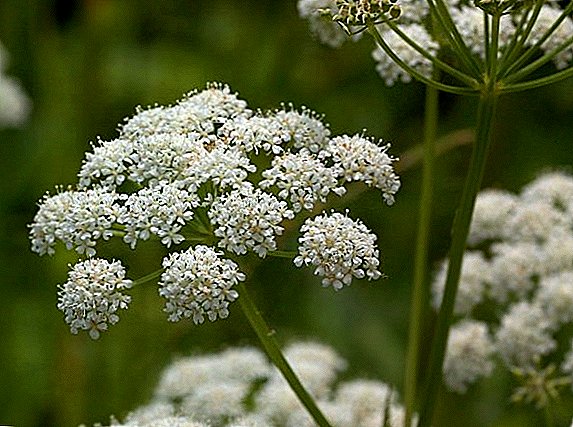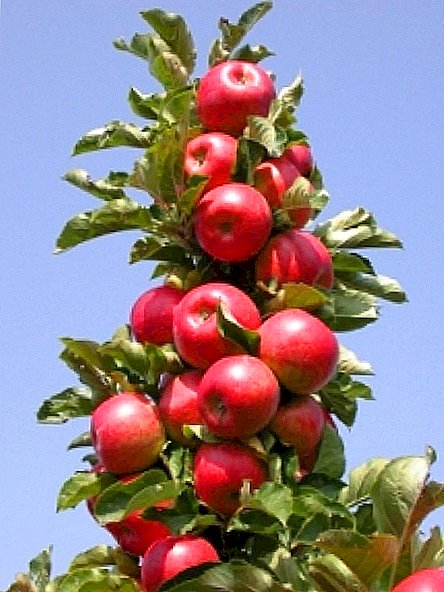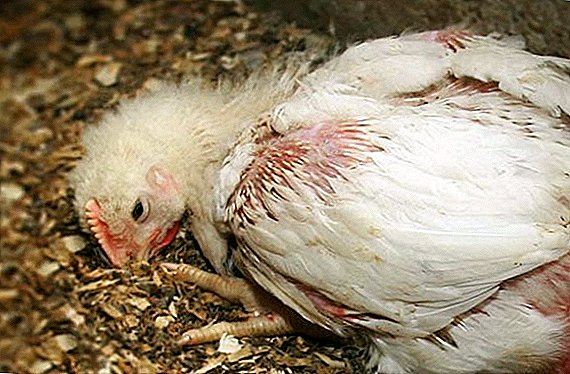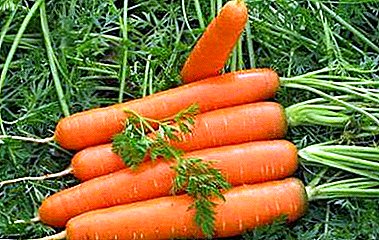
Carrots are a healthy vegetable. Appreciate it for edible roots, rich in vitamin A. From carrots prepare summer salads and preservation for the winter.
It has a firm structure and thin skin. The harder the root vegetable, the longer it can be stored. Sluggish, with cracks or traces of a pest is better salted, dried in a dryer or frozen.
But not all carrots are suitable for long storage. Which one should be stored and which varieties to prefer? And how exactly? This is discussed in this detailed and useful article.
Features of the structure of the root, the nuances when harvesting from the beds
Root vegetables can heal minor damage. This ability lasts 8-12 days after harvesting, at a temperature of 10-14 degrees and a humidity of 90-95%. The head of the fetus heals better at 20–25 degrees and a humidity of 90–95%.
When the carrot fades, it loses its resistance to disease.. To avoid this, pruning tops will help before or after harvesting. Also, the product must be protected from the sun and wind.
What sort of carrot to choose?
For long storage taken late varieties. They must be the correct shape and without damage to the root. Observing the temperature of 0-10 degrees and humidity 94-100%, the shelf life is 4 - 8 months.
Early ripening varieties are not suitable for storage in the basement; late ripening crops are needed - they bloom for 4 months.
For example:
 “Queen of Autumn” - Its fruits are juicy and sweet. Have a bright orange color. This is a high-yielding variety that will be stored for a long time and will endure a temperature drop to -4.
“Queen of Autumn” - Its fruits are juicy and sweet. Have a bright orange color. This is a high-yielding variety that will be stored for a long time and will endure a temperature drop to -4.- “Flaccoro” - it is famous for its beautiful root vegetables with tender pulp and “immunity” to diseases. Suitable for both processing and fresh consumption.
- Medium late grade “Carrots Special” - has an orange-red conical shape of the fruit. Stored long and without difficulty.
- “F1 cascade” - with a short sharp root. It has orange juicy fruit. Not whimsical in storage. It is highly resistant to disease. Great for children's meals.
- “Vita Long” - has long fruits with great taste. Does not crack when grown. Contains a large amount of carotene and sugar. It makes excellent carrot juice.
- “Rote Riesen” - fruits are colored orange. Like “Carrot Special”, has a conical shape. Ideal for any processing.
- “Karlena” - is the leader of long storage. Carrots in the shape of a cylinder with a smooth surface. Crispy and juicy to the taste. Able to maintain their properties until the end of spring.
- “Cardinal” - especially rich in sugar and carotene. Fruits in the form of a cone are well preserved until the beginning of summer.
- Quite popular variety “Shantane” - possesses cone-shaped short fruits with a decent thickness and dense pulp. This carrot will last great until the end of winter.
Storage methods in the cellar
On harvest day, carrots are washed in warm water without any cleaning agents. Then it is thoroughly dried in the open air under a canopy at 10-14 degrees. Such a "quarantine" lasts 7 - 10 days. Then the fruit is sorted and checked for defects.
The state of the cellar greatly affects the shelf life vegetables and preparations. The temperature should fluctuate in the range of 1-3 degrees. Otherwise, the products will deteriorate.
There are many options for storing carrots in the basement. To choose the right method, you need to take into account the structure of the cellar, humidity and temperature.
Storage methods:
- With the help of sand. A favorite way of summer residents.
- In the clay. Well preserved, but not clean.
- Sawdust, preferably pine. Convenient and easy.
- Onion Husk Save the vegetable as well as sawdust.
- Large amount of moss. Great way.
- In plastic bags. Not the best tool, but popular because of its ease of use.
How to save carrots until spring in glass jars?
Here are some ways:
 Carrots, grated on a coarse grater, placed in layers in glass jars. Each layer is sprinkled with table salt. Then the workpiece is sent to the refrigerator. Stored up to six months. When adding it in food, salt is not recommended to use, so as not to overdo it.
Carrots, grated on a coarse grater, placed in layers in glass jars. Each layer is sprinkled with table salt. Then the workpiece is sent to the refrigerator. Stored up to six months. When adding it in food, salt is not recommended to use, so as not to overdo it.- Well-washed and dried vegetables are peeled and cut into small pieces. Then fit into a clean, dry jar. Filled containers are sent to the freezer. Shelf life - 1-2 months.
- You can grate the fruit on a coarse grater and dry in a dryer, oven or under the sun. After that, put in a glass container. Close tightly with a lid.
- Vegetables are washed and soaked in cold water for a quarter of an hour. Then they are immersed in almost boiling water for 3-4 minutes. Then peeled and cut into thin slices. Put everything in jars and pour hot pickle. After - tightly close the lid.
- Well-washed fruit cut into small pieces. Boil them for 7 minutes. After that, spread on banks, pour hot solution and close the lids.
- Put cleaned carrots tightly in a container. Then pour hot saline and insist for several days under the yoke. Then the banks are closed and sent to the refrigerator.
To prepare the brine, you need to dissolve 60-65 grams of salt in boiling water. Boil should be 5 minutes. Then strain and cool to 20-25 degrees.
Storage of 3-liter cans in the cellar
Another way to keep a vegetable in the basement is glass jars.. To do this, the vessel must be thoroughly rinsed with detergent and dried. Can and boil. Then put carrots in them vertically. It is necessary to leave a small distance between the roots. Here you can also put a small horseradish root or pine sawdust. Open banks send to the cellar.
What if something went wrong?
Sometimes it happens that, even following all the rules and advice, the products still start to deteriorate. If the process of decay has begun or mold has appeared, it is necessary to urgently react:
- Check all the vegetables in the cellar. Often carrots are stored with beets. If she started to rot, then you need to process the basement - it is infected.
- Check whether sufficient air enters the tanks in which the fruit is stored.
- Check the distance between the roots, maybe they do not have enough space, which contributes to rotting.
- Measure the temperature and humidity of the basement or other storage location. Most likely there are changes.
Important! You must carefully review all the carrots and select the spoiled fruit. The remaining vegetables should be washed in an infusion of onion peel and thoroughly dried.
Additional tips and warnings
 For better preservation, it is necessary:
For better preservation, it is necessary:
- Make stock checks in early spring when the temperature in the basement and on the balcony varies greatly.
- Rinse the products with running water well before shipment.
- Before drying the carrot, it is better to chop it. This preserves the color and all its useful properties.
- Cover the crop with a felt blanket when the temperature in the cellar falls below what it is supposed to. This will help to avoid hypothermia.
Germination of carrots occurs when too high air exchange in the cellar. Air circulation can be difficult to determine right away. If this happens, then the airway should be cut, the young tops should be cut off and powdered with cuts.
Glass jars are an ideal way to store a small amount of vegetable. The main thing is to create optimal conditions for them and not to mix them with spoiled fruits. Carrots with various disadvantages can be dried, pickled or pickled, creating delicious and nutritious winter preparations.


 “Queen of Autumn” - Its fruits are juicy and sweet. Have a bright orange color. This is a high-yielding variety that will be stored for a long time and will endure a temperature drop to -4.
“Queen of Autumn” - Its fruits are juicy and sweet. Have a bright orange color. This is a high-yielding variety that will be stored for a long time and will endure a temperature drop to -4. Carrots, grated on a coarse grater, placed in layers in glass jars. Each layer is sprinkled with table salt. Then the workpiece is sent to the refrigerator. Stored up to six months. When adding it in food, salt is not recommended to use, so as not to overdo it.
Carrots, grated on a coarse grater, placed in layers in glass jars. Each layer is sprinkled with table salt. Then the workpiece is sent to the refrigerator. Stored up to six months. When adding it in food, salt is not recommended to use, so as not to overdo it.